Cuantas Veces Ponen Huevos Los Eastern Blue Bluebirds
Singing a melodious song and having a rich blue, white, and rust plumage, the Eastern Bluebird is one of the most beautiful backyard birds.
Having a willingness to occupy birdhouses and nesting boxes.
They are considered by many birders to be favorite visitors of theirs.
Here are some Eastern Bluebird facts.
1. Bluebirds are cavity nesters and love nest boxes
Eastern bluebird (sialia sialis) nesting habits involve taking residence in tree cavities and they will use an artificial nest box. They like snug boxes with a 4-inch square base and a 1 ¾-inch diameter entry hole. Habitat and nest cavities have been disappearing for many years, but an incredible comeback has been made by bluebirds.
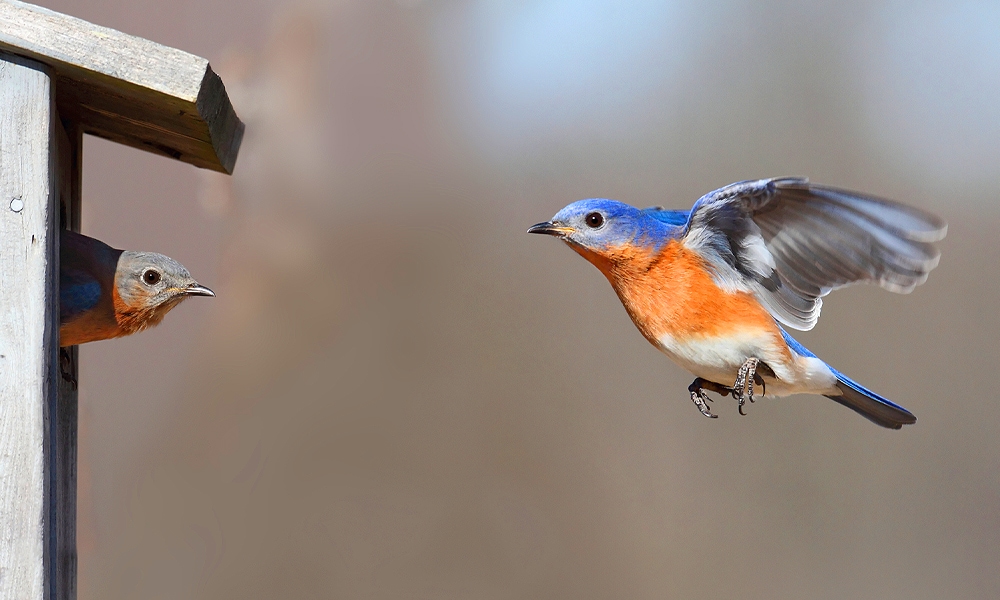
This is due to thousands of bluebird nest boxes being installed throughout the country. Eastern Bluebirds are easily found in open fields and sparse woodland areas, including along woodland edges and North America. Meadows, gardens, hedges, and parks are also good places to find bluebirds. You can find Eastern Bluebirds throughout North America.
2. Bluebirds are omnivores but love mealworms
Eastern bluebird can be easily drawn in with a small dish filled with mealworms. They prefer to eat live mealworms rather than dried. Bluebirds can spot caterpillars and insects in tall grass at a remarkable distance of over 50 yards. The Eastern Bluebird is an omnivore as it eats plants and meat.
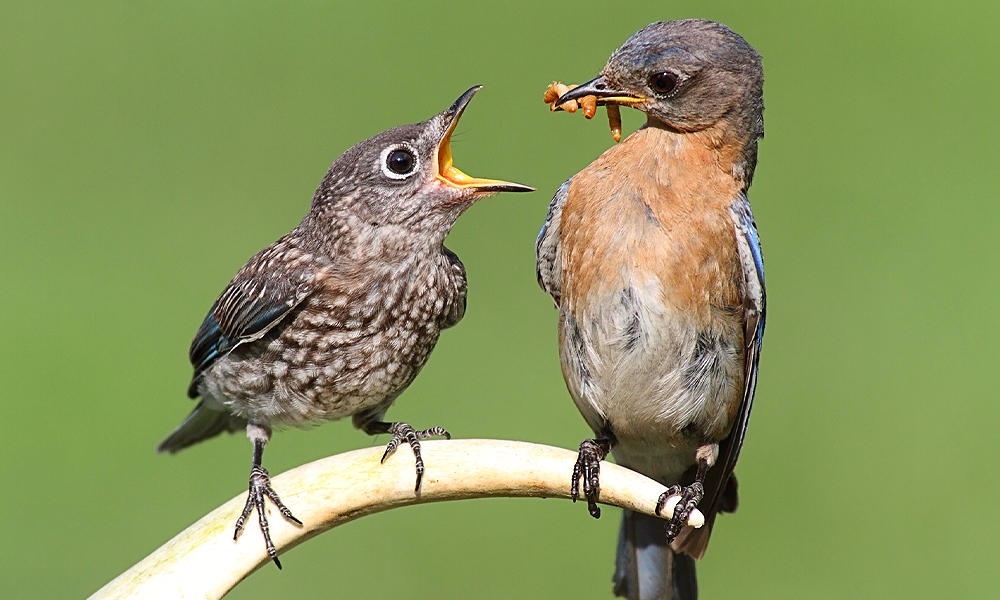
Its diet consists of crickets, grasshoppers, and various beetles during the summer and berries, wild grapes, and honeysuckle during the fall and winter. The most common foods offered to backyard birds won't be eaten by bluebirds, such as sunflower seeds, millet, and mixed birdseed. They also won't sip hummingbird nectar.
3. The male Eastern Bluebird displays at his next cavity to attract a female
The male bluebird brings his nesting material to the hole of the tree, goes in and out, and waves his wings while perched above it. Like a courtship display, the male will sing and flutter in front of the female, partly spreading his wings and tail.
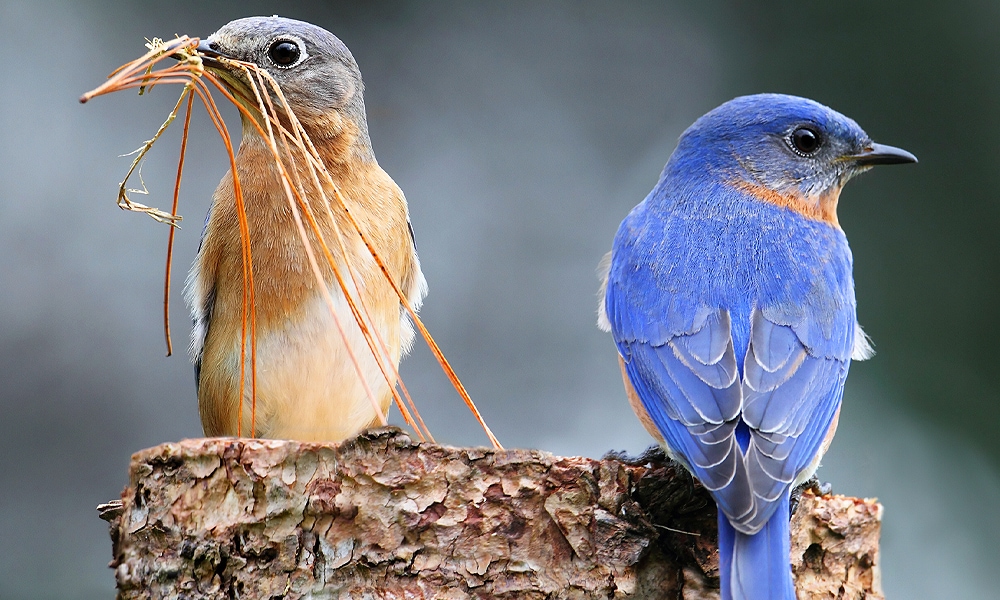
The male makes minimal contributions to nest building as the female Eastern Bluebird builds the nest and incubates the eggs. Most bluebird nests can be seen in natural hollows in trees, in an old woodpecker hole, or in a birdhouse. Construction of the nest, which consists of weeds, twigs and dry grass, lasts around 10 days.
4. Eastern Bluebirds are very social
Flocks of 100 or more bluebirds will gather at times, though they are very territorial as well. They defend a territory around their nest during the breeding season, a feeding territory in the winter. Eastern Bluebirds are partially migratory. They are year-round residents in the southeastern United States, though they can go as far north as southern Canada in their summer breeding populations.
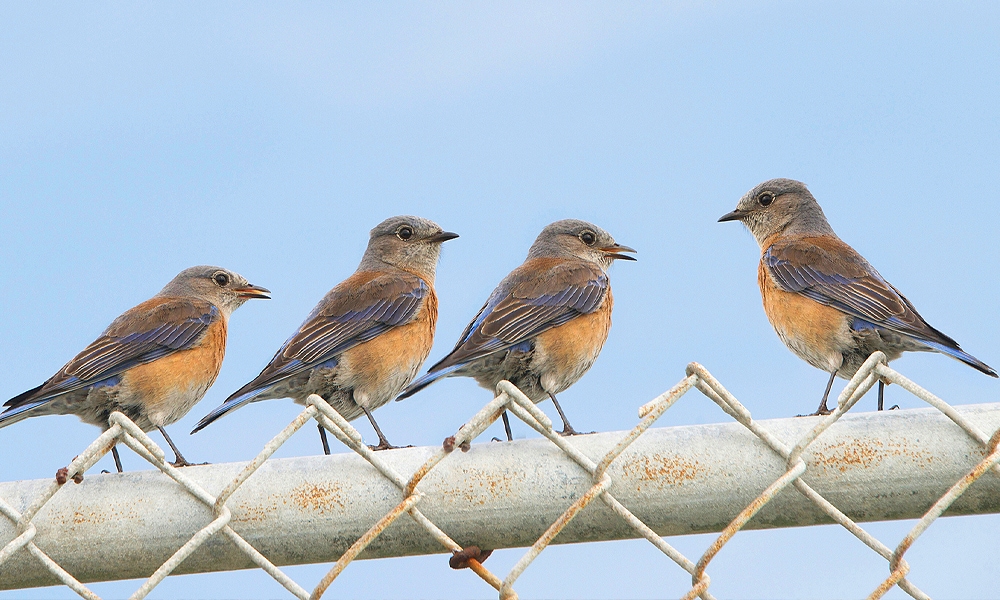
When hunting, Eastern Bluebirds often fly from their perch to the ground to catch insects. Eastern Bluebirds are gregarious birds that live in flocks of 100 birds outside the breeding season. They communicate through songs and body language.
5. Eastern bluebirds may visit backyards if food is offered
Bluebirds (sialia sialis) don't often come to feeders unless you have bluebird feeders that provide mealworms. Eastern Bluebirds are largely insectivorous in spring and summer. The bluebird range of eating consists of caterpillars, grubs, beetles, and other insects. The bluebird winter has a mixture of fruit and berries.
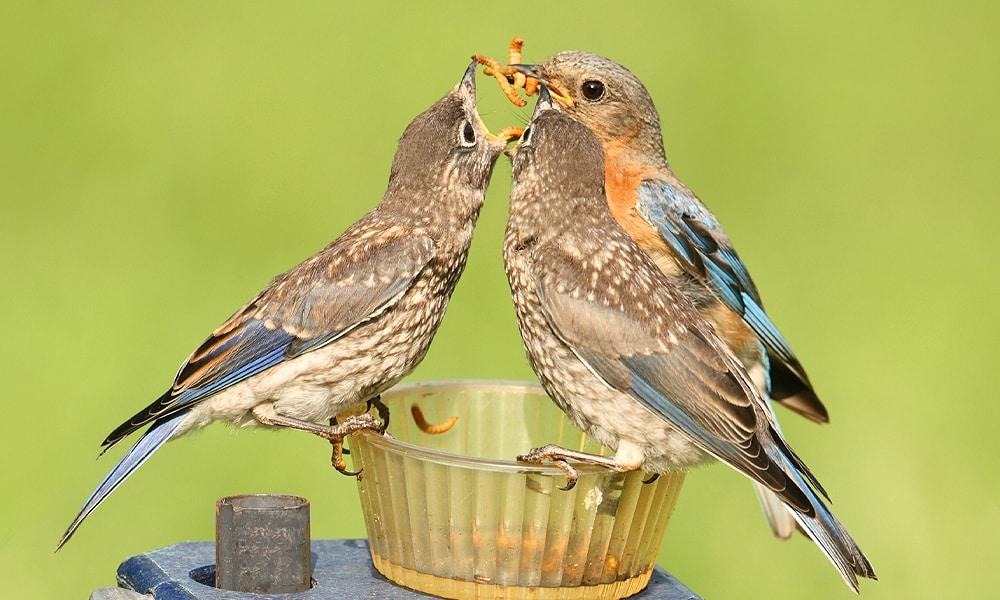
Eastern Bluebirds do much foraging by perching low and fluttering down to the ground to catch insects, often hovering to pick up items instead of landing. They are also known to catch insects in mid-air and may take some while hovering among the foliage. On rare occasions, bluebirds will also eat small amphibians like frogs and lizards.
6. Male bluebirds sing beaks closed
Male bluebirds do not open their beaks widely when they sing, unlike some other songbirds like a Meadowlark. Males may stop singing during incubation periods. Male Eastern Bluebirds use different songs for mating and territoriality. A male may sing as many as 1,000 songs an hour when attempting to attract a mate.
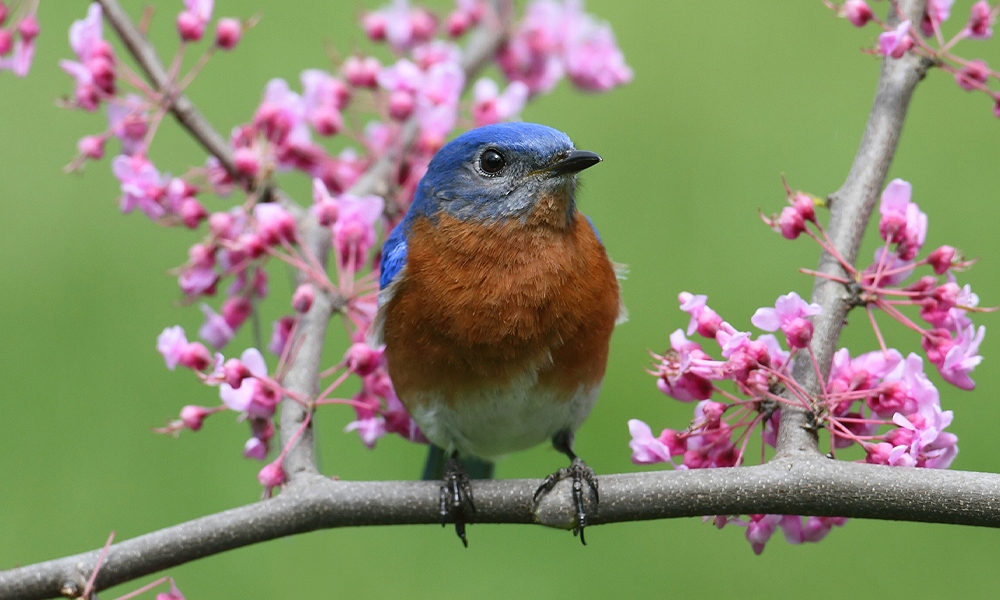
While the bluebird call is normally pleasant, certain chattering, bill snapping or clicking scolding calls are sometimes called a predator or anger song. Bluebird landlords may be able to tell one bluebird song of a male from another. Singing frequently in soft whispers, bluebirds provide pleasing musical series of mellow whistles.
7. The Eastern Bluebird's song is one of its most distinguishing characteristics
The Eastern Bluebird song is a fairly low-pitched, warbling song that consists of several phrases, each containing 1 to 3 short notes. Harsher chattering notes may be interspersed with the whistles. Common eastern bluebird calls include sounds like the words "truly" or "purity" when repeated multiple times.
The sounds will come out sounding like "chur lee" or "chir wi". Eastern bluebird calls last less than a second, with males' calls typically lasting longer than females' calls. When they are approached by predators, males make a song-like warning cry. Females will begin to sing to bring a protective male back to the territory.
8. The North American Bluebird Society was formed to encourage bluebird nest boxes
In 1978 Dr. Lawrence Zeleny founded the North America Bluebird Society in order to promote the preservation of bluebirds by putting up nest boxes (1). Zeleny dedicated much of his life to providing nest boxes and managing bluebird trails. Through many talks and written articles, he promoted bluebird conservation.
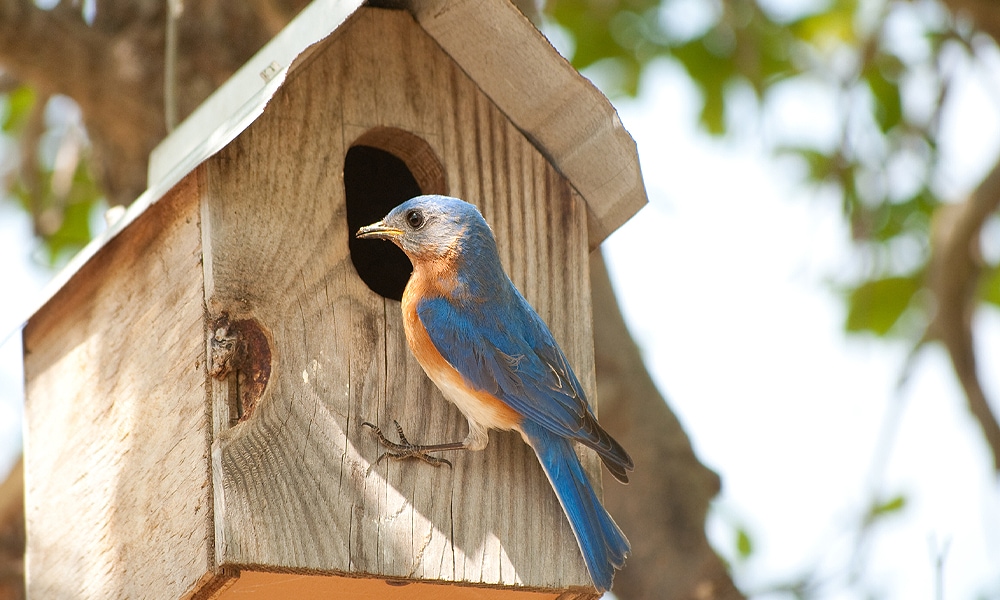
The Eastern Bluebird was declared a rare species because of its low population resulting from severe winters that occurred from 1976 to 1978. In 1996 it was taken off this list. According to the Ontario Breeding Bird Atlas, from 1968 to 2000, the population of Eastern Bluebirds showed a yearly increase of 6.5%.
9. The bluebird is the official bird of two states
Missouri and New York are the two states that are represented by the eastern bluebird as their official bird. On March 30, 1927, the bluebird was chosen to become Missouri's official state bird. New York adopted the bluebird as their state bird in 1970 (2). The bluebird had won an informal referendum on April 13, 1928, held by the New York State Federation of Women's Clubs.
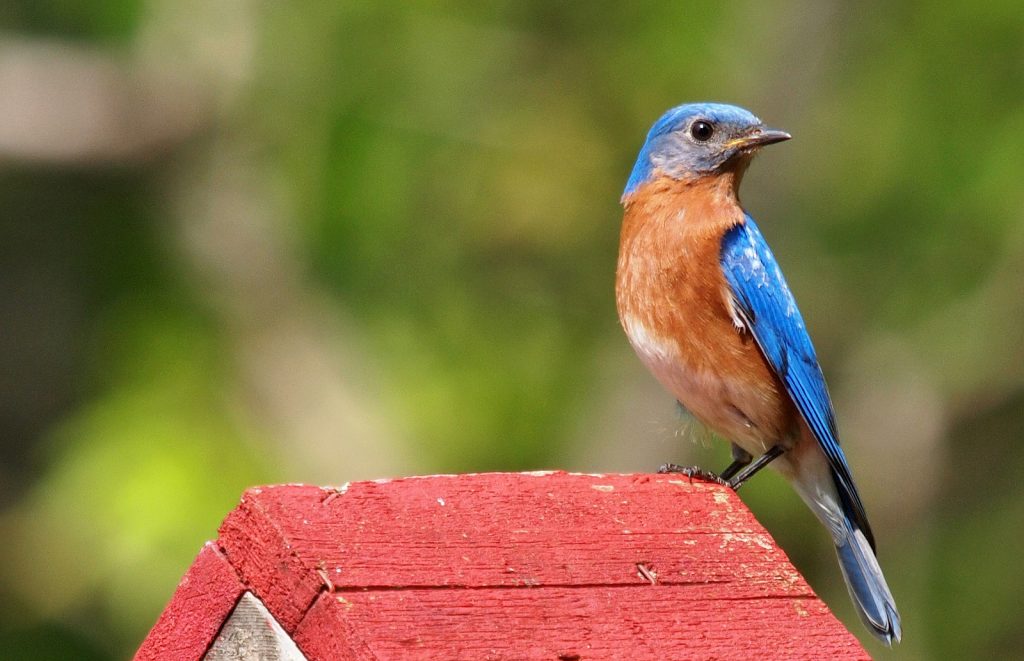
On January 31, 2020, SUNY Empire State College, based in Saratoga Springs, New York, chose the Eastern Bluebird to be the university's official sports mascot. Blue the Bluebird symbolizes intelligence and curiosity, as well as optimism (2).
10. The oldest recorded Eastern Bluebird was at least 10 years, 6 months old
Eastern Bluebirds have a normal lifespan of 6 to 10 years. They can survive 6 years in the wild and up to 10 years in captivity. However, most mortality occurs in the first year of life, making average lifespans much shorter than this.
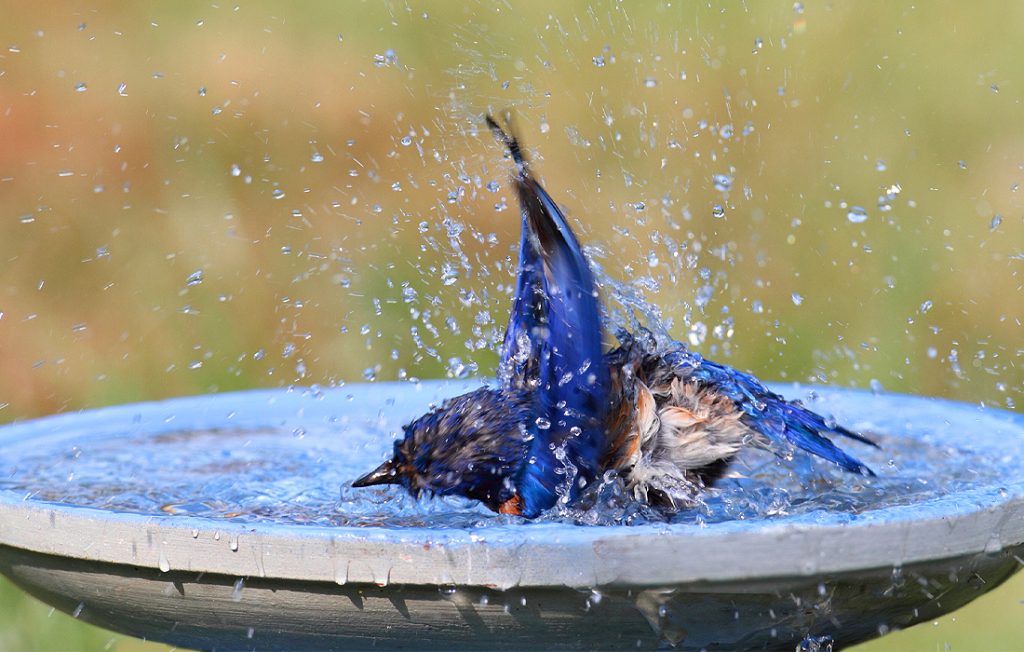
It is most likely that 70% of all bluebirds die before they last 1 year. The oldest known wild individual lived 10 years and 6 months (3). It had been banded in New York in May 1989 and was found dead in South Carolina in November 1999. Families of bluebirds flock together until the fall season when they marge with other family flocks.
11. The Eastern Bluebird lays two clutches per season
Female bluebirds lay 2 to 8 light blue or whitish eggs that hatch after 12 to 16 days. Eggs laid by the same female Eastern Bluebird have the same color, and so eggs in the same nest of different colors indicate those of a different female.
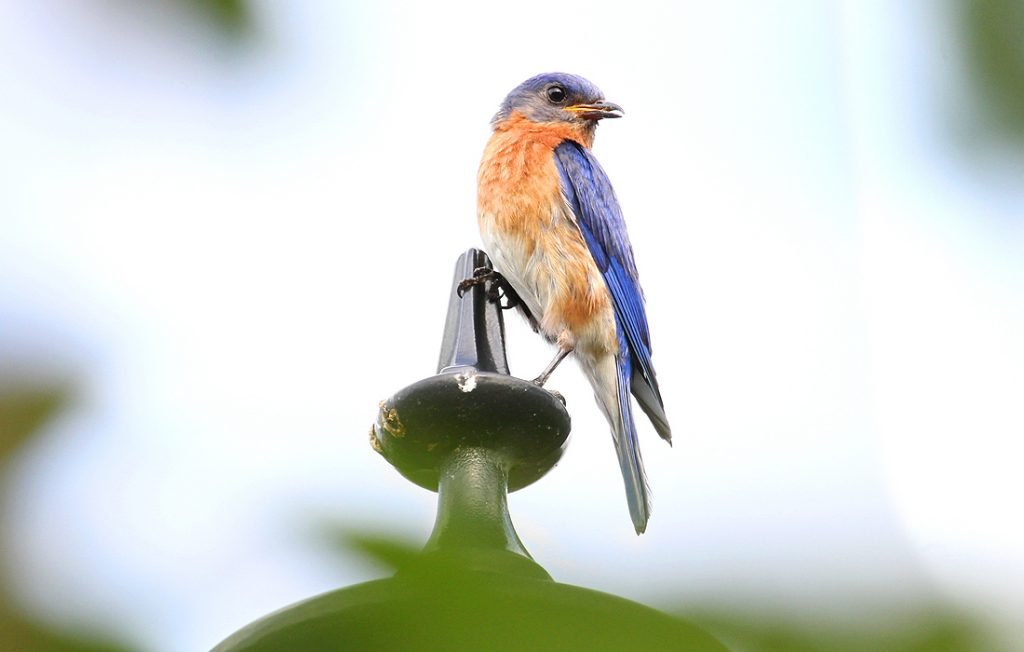
Baby bluebirds are helpless at birth and will need parental guidance. Both parents provide food, mainly insects, for their chicks while they are in the nest. Chicks stay in the nest until the age of 15 to 20 days. While feeding chicks, both parents will carry away fecal sacs to keep the nesting area clean.
12. Bluebirds are very territorial
Eastern Bluebirds are also very territorial as they occupy and defend a territory of 1.1 hectares during the mating season. 120.8 hectares are defended during the winter.
Do bluebirds migrate? When food becomes scarce during the winter, northern populations will migrate south. The preferred eastern bluebird habitat consists of open areas with scattered trees nearby for perching and roosting.
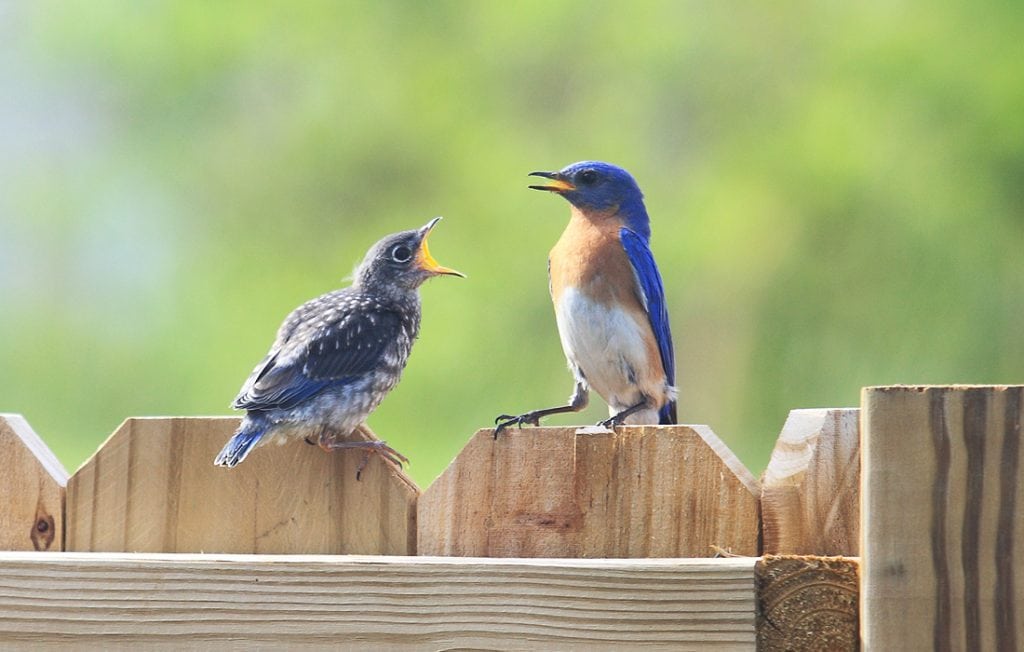
Where do bluebirds sleep at night? Sleeping places include pastures, orchards, parks, and meadows. Eastern Bluebirds will build nests in tree cavities to protect their young, in a behavior similar to that of woodpeckers. Bluebirds will sometimes construct their nests within abandoned woodpecker holes of trees.
13. There are three bluebird species and eight subspecies
There are 3 main species in the bluebird family, which are the Eastern Bluebird sialia sialis, the Mountain Bluebird (Siala currucoides), and the Western Bluebird (Siala mexicana).
There are also 8 recognized subspecies of the Eastern Bluebird: the eastern bluebird sialia sialis, bermudensis, caribaea, episcopus (Tamaulipas Bluebird), fulva (Azure Bluebird), grata (Florida Bluebird), guatamalae (Southern Mexico), meridionalis (El Salvador, central and western Honduras, and north central Nicaragua), and nidificans (Veracruz, Mexico) (4).

The alpha code for the Eastern Bluebird is EABL. There is a possibility that Eastern Bluebirds may interbreed with Mountain Bluebirds where their ranges overlap, most notably in North and South Dakota.
14. Bluebirds are the symbols of spring, happiness, love, and hope
Bluebirds are considered to be clear indicators of the spring season arriving. Since bluebirds can produce between 2 and 4 broods during the warmer months, they are associated with spring and renewal. They have been featured in many popular songs like "Somewhere Over the Rainbow," "I'm Always Chasing Rainbows," and "The White Cliffs of Dover."
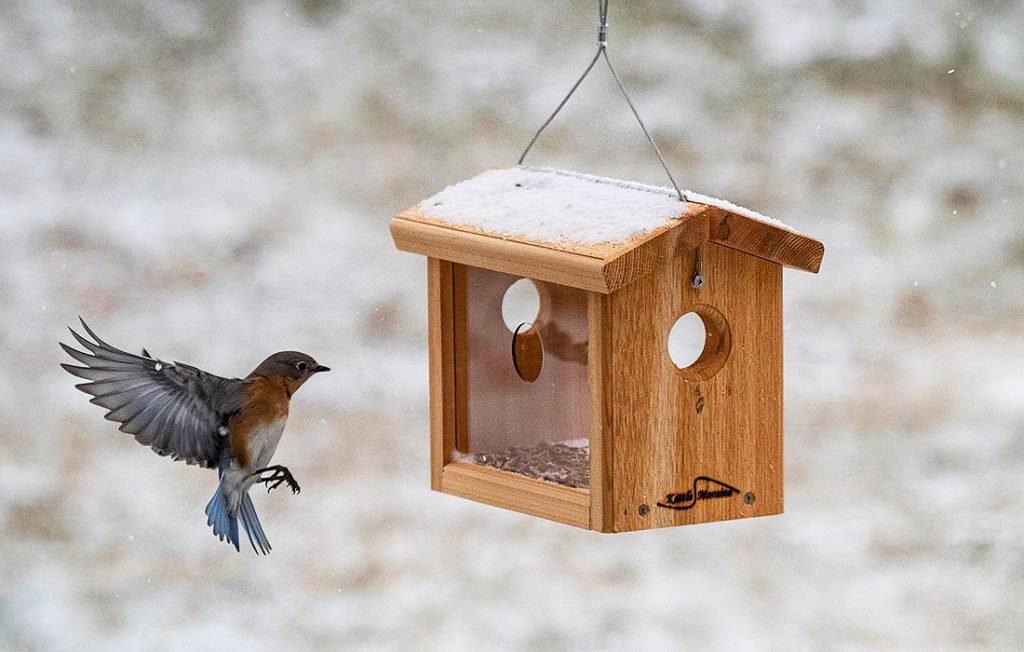
In his book titled "The Bluebird: How You Can Help its Fight for Survival," Dr. Zeleny makes a compelling testimony of why he calls bluebirds the symbol of love, hope, and happiness. A dead bluebird is a symbol of disillusionment, loss of innocence, and the transforming effects of age.
15. Bluebirds are generally monogamous
Being monogamous means that bluebirds form a basic social unit in the breeding territory. One study of Eastern Bluebirds (sialia sialis) in Georgia and South Carolina indicated that 95% of the time, nestings involve one male and one female (5). Mates stay together throughout the breeding season and may breed for more than one season.
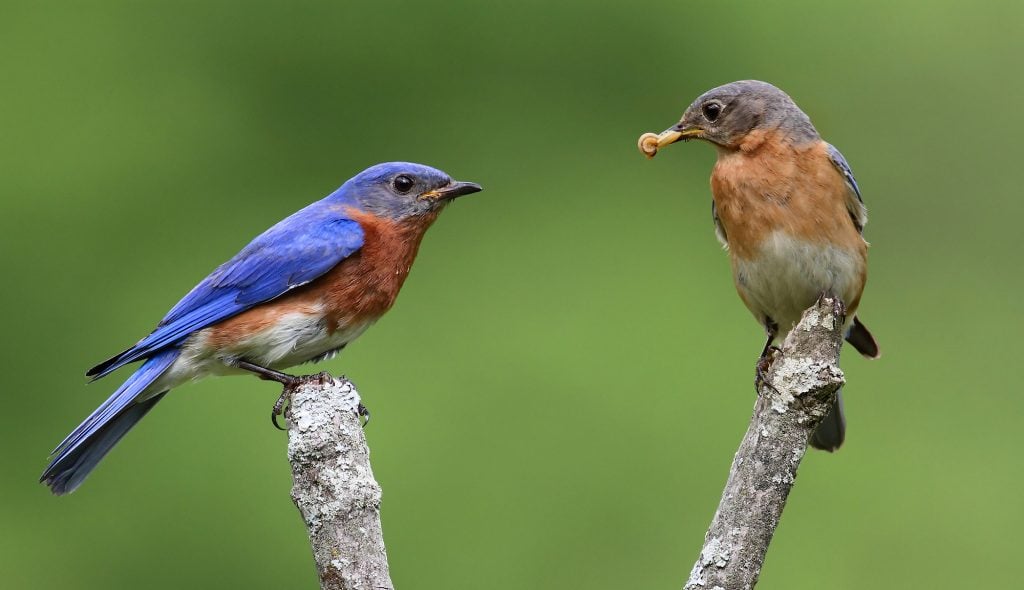
However, some birds may switch mates during a breeding season in order to raise a second brood. Pairs are more likely to stick together if a previous nesting was successful. One study showed that 70-85% of successful pairs re-nested with the same partner in the same season, compared to 30-50% of unsuccessful pairs.
Read next: Bluebird vs. Blue Jay: Songs, Habitat & Identification
Source: https://worldbirds.com/eastern-bluebird-facts/
0 Response to "Cuantas Veces Ponen Huevos Los Eastern Blue Bluebirds"
Post a Comment